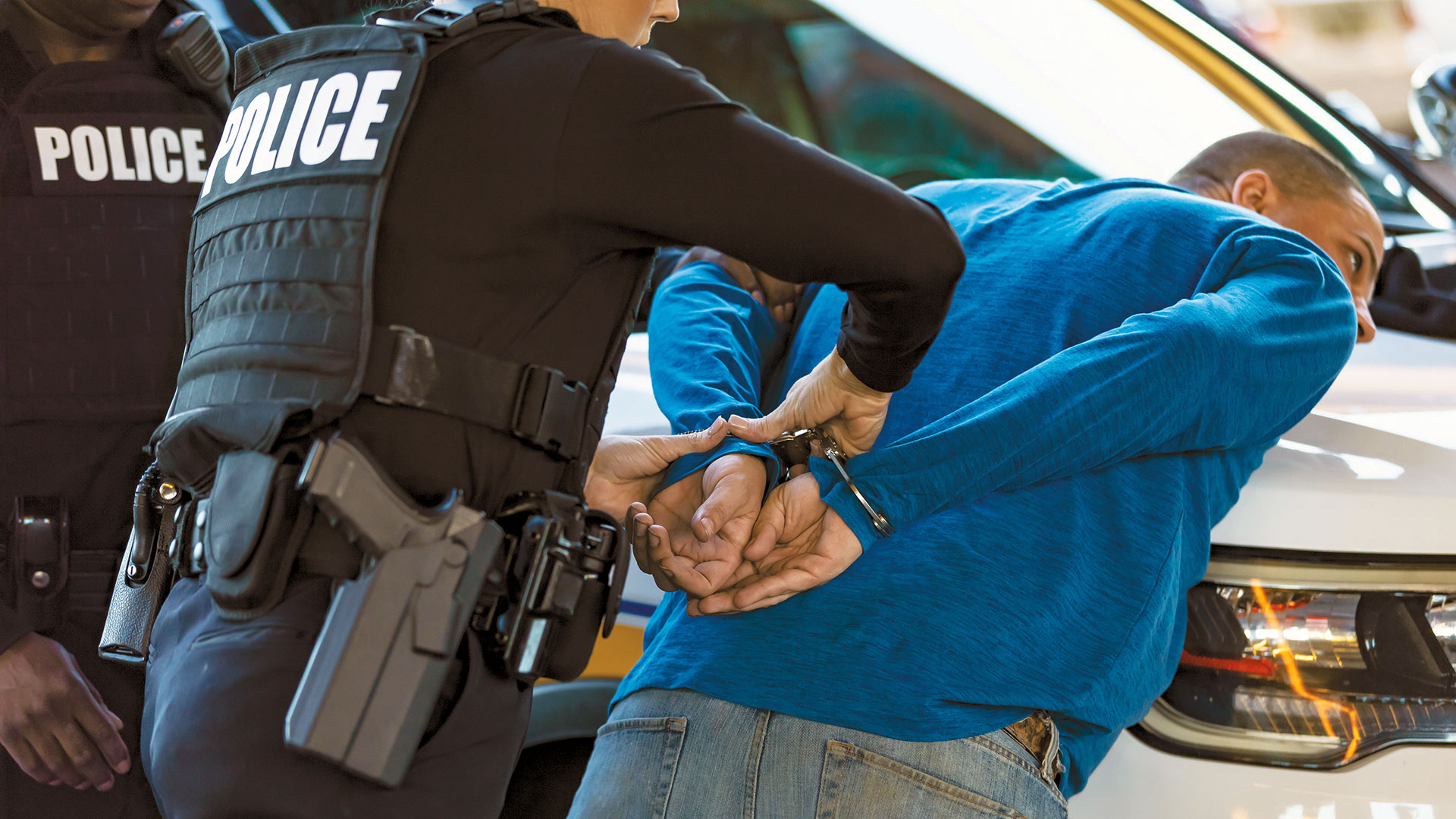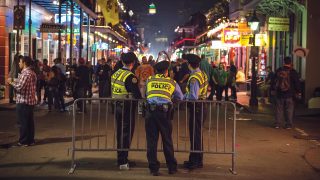
We spend a good deal of training time teaching law enforcement officers how to use firearms safely and effectively. We also teach verbal skills to gain compliance from a population that often has no respect for authority. “De-escalation” is a term in vogue that has long replaced “ask ’em, tell ’em, make ’em,” which was the progression before we more specifically defined levels in a force continuum.
It is always best to win with words. Contrary to what some of the public and media believe, LEOs take extreme risks to avoid using deadly force even when it is clearly justified. It is good that we are reluctant to use our guns, but we need to always be aware that it may be necessary. All our confrontations are armed confrontations since we carry weapons, even if the subject brings none. Keeping our tools from being used against us is always a concern.
In the fluid dynamics of human combat, our objective can change from control to survival in a second.
Where we are deficient is the huge middle area where words won’t work and deadly force is not appropriate. Many LEOs are so reluctant to put their hands on a criminal that their failure to act causes the situation to escalate, ultimately making greater levels of force necessary. We tend to get mentally locked into being dependent on our tools. We expect them to work as they did in training, with the subject being neatly handcuffed. A few well-placed baton strikes should gain compliance, right? But what if you have a combative Rodney King who is numbed by drugs? Do you keep striking him along with your colleagues until he submits? What happens when the Taser fails to make that perfect connection for instant incapacitation? Or a spray of OC just pisses off a drunk? Couple this with our citizens’ perception of appropriate use of force and the problem becomes clear. The public has been trained by Hollywood that we can magically control aggressive opponents without injury if we choose to. Real violence is so upsetting to bystanders that they quickly sympathize with the criminal who is actively resisting, reframing him as the “victim” of
police brutality.
Mike Tyson, a street thug doing robberies for which he was convicted as a juvenile delinquent and locked up before turning his talent for fighting into a successful boxing career, wisely observed, “Everybody has a plan until they get punched in the face.” Today’s police recruits may have never been in a fight. That experience may be overwhelming for them. If it first happens on the street, the result can be tragic if they respond inappropriately with either too little or too much force for the situation. As trainers, we can provide some “environmental inoculation” by adding wrestling in the academy. Although it helps, it cannot simulate the overwhelming fear that comes from having another human being actively trying to kill you.
Recognizing the dynamics of human combat and the limitations of our tools can help us in these situations. Experience is ideal, but you must survive a lot of trial and error to gain that wisdom. You dramatically enhance your skills by getting some ground fighting training. Jiu-jitsu or sport judo can put some great techniques in your tactical tool kit. Of course, fighting on a soft, well-lit mat, with a referee, provides only a fraction of the intensity of fighting on the street with infinite deadly variables. But you will gain confidence and become more comfortable going hands-on with an adversary. Keep in mind that the goal of these games is to pin the opponent on their back or get them to tap out in submission. That differs from our goal, which is to get a resisting criminal face down with their hands cuffed behind their back.
Our tactics will vary depending on whether we are winning or losing the fight and can change quickly during the encounter. We must adapt to those changes to survive the battle and be able to articulate them in order to survive the litigation and criticism that is sure to follow.
We want to gain compliance using words alone if possible. What force is used will be determined solely by the person we are confronting and the choices they make. Our response to their behavior will either embolden them or deter them from more aggressive action. Controlling perception is important in influencing their choices and avoiding force. Obviously, some criminals feel they have nothing to lose and will fight regardless, so we must be prepared for them too. Timing is everything. Going hands-on too late can be as perilous as too early. Certainly, you want to “give peace a chance,” but when it is clear that your subject is unwilling, delay may appear as weakness, which can necessitate even higher levels of force.
There are relevant psychological and physiological aspects to fighting. Stress is a factor that is reduced by the confidence that comes from training. Breathe deeply. During physical combat, adrenaline kicks in and you will not feel pain as much. Your opponent is also experiencing this, in addition to any drugs or mental illness they bring to the encounter. That’s why many pain compliance techniques that work great in training suddenly are ineffective on the street.
When we are winning the fight, we can use minimal force to gain the control necessary to get the offender handcuffed. This is where understanding the mechanics of control holds like armbars and wristlocks really pays off. However, when we are losing, everything changes. When we fight to survive, we use whatever is necessary to get back to controlling the aggressor or preventing them from killing us. In the fluid dynamics of human combat, our objective can change from control to survival in a second. Generally, the longer the fight goes on, the more likely you are to get hurt or have to hurt your adversary. You must win every encounter. You may not win by arrest, but you must win by surviving. I highly recommend you seek to obtain that warrior mindset from folks like Dave Grossman, the Street Survival seminars from Calibre Press or other qualified experts who have actually been there.
Take care of yourself and stay safe.
As seen in the July 2024 issue of American Police Beat magazine.
Don’t miss out on another issue today! Click below:





